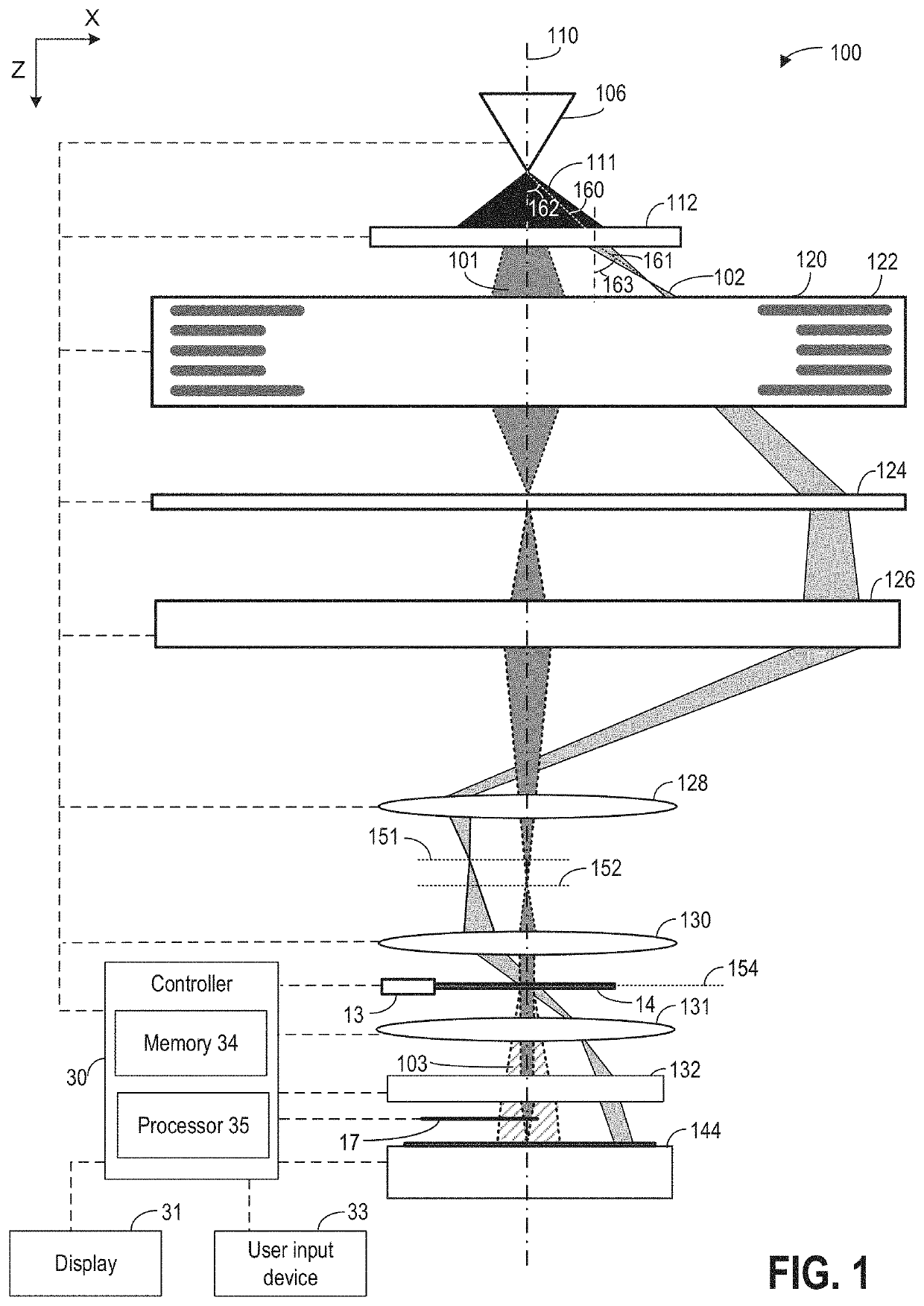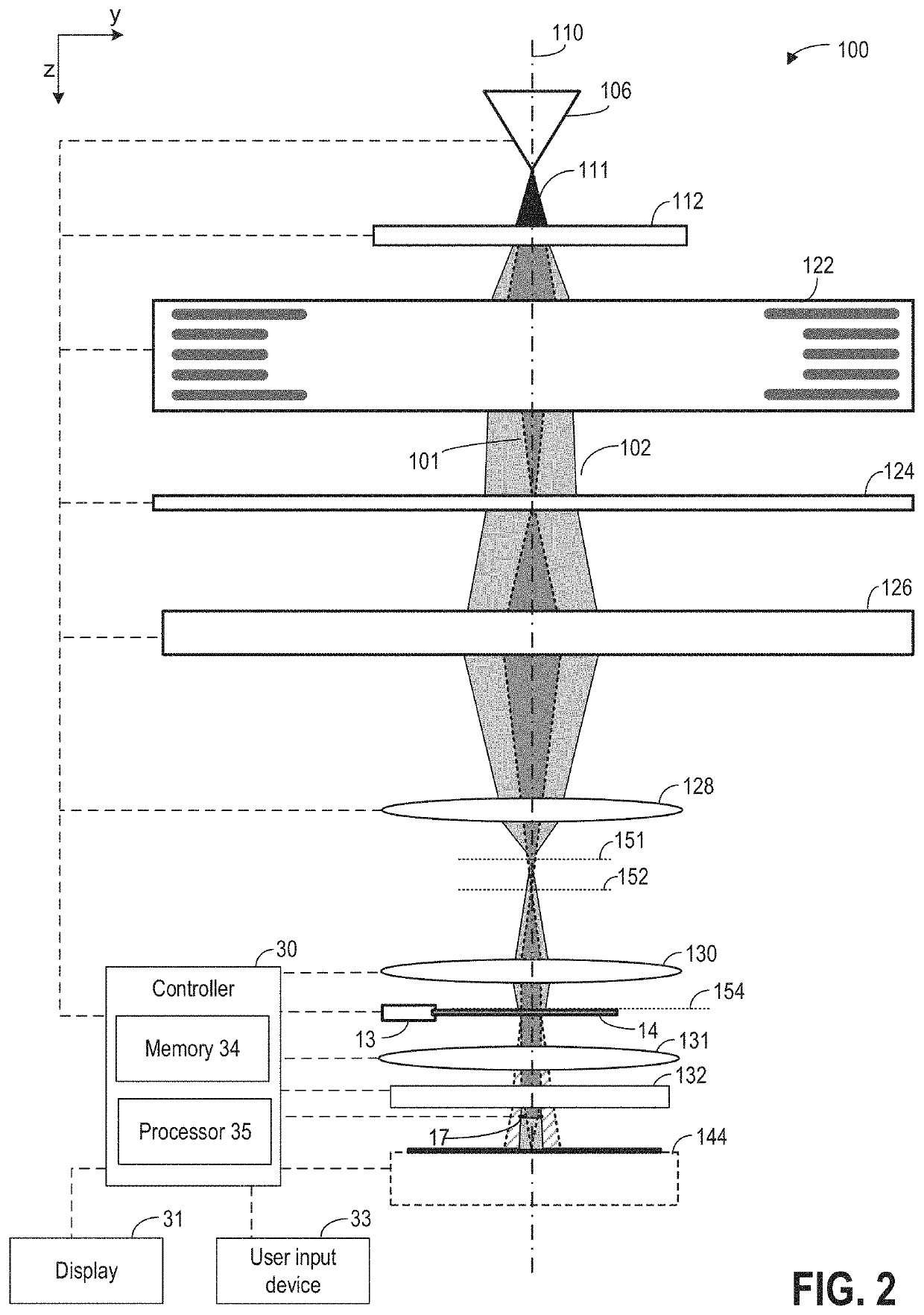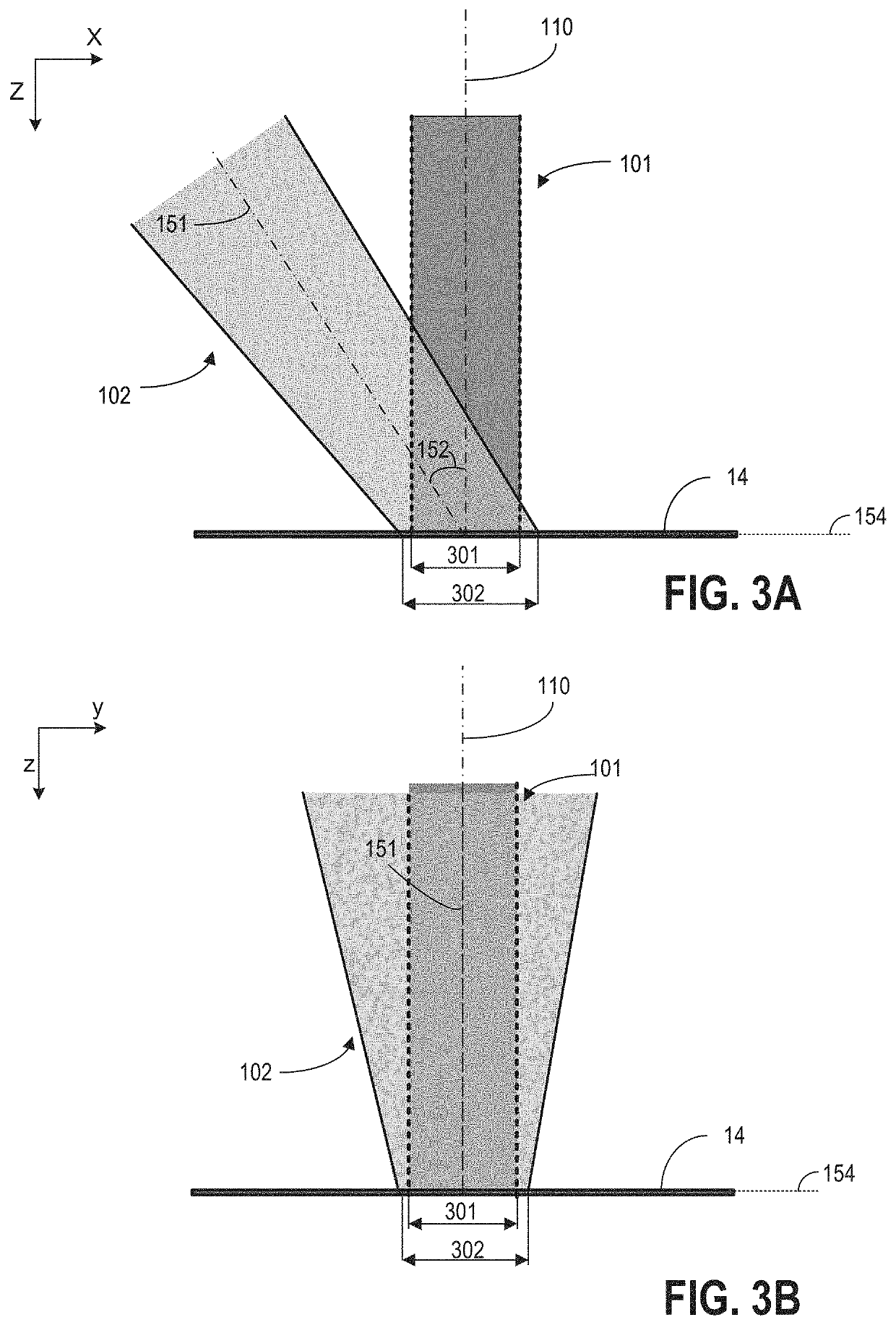Methods and systems for acquiring 3D diffraction data
- Summary
- Abstract
- Description
- Claims
- Application Information
AI Technical Summary
Benefits of technology
Problems solved by technology
Method used
Image
Examples
Embodiment Construction
[0016]The following description relates to systems and methods for acquiring multiple diffraction patterns of a sample. The multiple diffraction data maybe a diffraction tilt series, such an electron diffraction tilt series acquired using a bifocal multibeam charged particle system. Such bifocal multibeam charged particle system is disclosed patent application Ser. No. 16 / 834,963, filed on Mar. 30, 2020, by Henstra et al., titled “Dual Beam Bifocal Charged Particle Microscope,” which is referenced herein in its entirety and for all purposes. In the bifocal multibeam charged particle system, the charged particles generated from a charged particle source positioned within an optical column are split into an axial beam travelling along the primary axis of the optical column and an off-axial beam travelling away from the primary axis of the optical column. The two charged particle beams have different focal properties. For example, the two charged particle beams have different focal pla...
PUM
 Login to View More
Login to View More Abstract
Description
Claims
Application Information
 Login to View More
Login to View More - R&D Engineer
- R&D Manager
- IP Professional
- Industry Leading Data Capabilities
- Powerful AI technology
- Patent DNA Extraction
Browse by: Latest US Patents, China's latest patents, Technical Efficacy Thesaurus, Application Domain, Technology Topic, Popular Technical Reports.
© 2024 PatSnap. All rights reserved.Legal|Privacy policy|Modern Slavery Act Transparency Statement|Sitemap|About US| Contact US: help@patsnap.com










